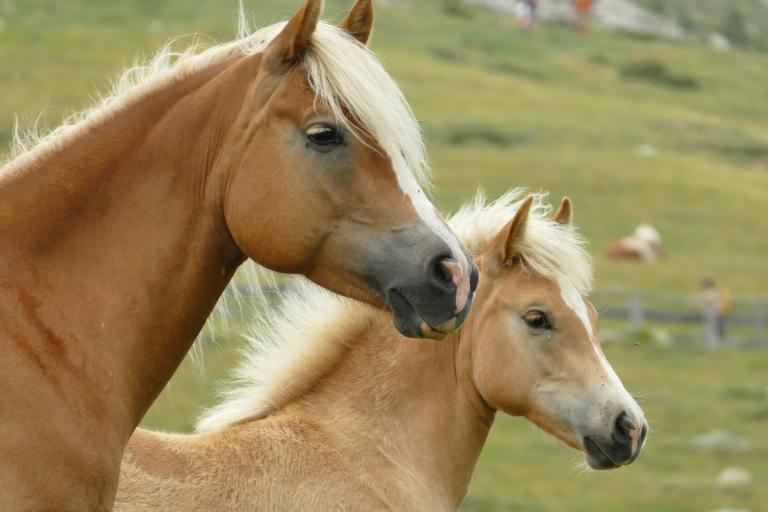Squamous Cell Carcinoma (SCC Horse)
Squamous cell carcinoma (SCC) is a malignant tissue formation (tumor) originating from the superficial layers of the skin and mucous membranes. It is the most common type of eye cancer in horses. This test identifies a gene mutation that increases the risk of developing SCC.
This mutation for SCC has been found in Haflingers and Percherons. The inheritance is autosomal recessive.
Genetic Test: available in Shop
Symptoms
- Slowly growing malignant skin neoplasms.
- Especially mucous membranes are affected.
- Development of eye cancer.
- Impairment or loss of the eye.
General Information
- Most common type of eye cancer in horses.
- This test identifies a gene mutation that increases the risk of developing a SCC. → Risk Test
- Due to this mutation in the DNA, the DDB2 protein, which is responsible for DNA repair in UV light damage, is not correctly formed.
- SCC is particularly common in Haflinger Horses due to the frequent occurrence of this mutation in the breed.
- It has also been described in Belgian draft horses and Pecherons, as well as Rocky Mountain Horses, Connemara ponies, Holsteiners and Belgian Warmbloods.
Test Information
Genotype and Lab Report
Inheritance: autosomal recessive
→ The risk of developing SCC is increased if both copies of the gene (scc/scc) are affected by the mutation. Animals with only one copy (N/scc) are clinically normal carriers.
Genotyp
N/N = normal
The horse has no copies of the genetic variant causative for SCC and therefore cannot pass it on to its offspring.
N/scc = a carrier
The horse is clinically healthy. The genetic variant causative for CSS will be passed on to its offspring with a probability of 50%.
scc/scc = at risk
The horse has an increased risk of developing SCC. The mutation will be passed on to its offspring with a probability of 100%.
Recommendations
- Carriers may be bred to normal animals (N/scc x N/N) without any risk of producing at risk offspring. The offspring should also be tested before breeding to determine if they are carriers or normal.
- When breeding two carriers (N/scc x N/scc), there is a probability of 25% for each foal to inherit two copies of the mutation (scc/scc) and therefore having an increased risk of developing SCC. This should be taken into consideration when planning breedings.
Literature
Bellone, R.R., Liu, J., Petersen, J.L., Mack, M., Singer-Berk, M., Drögemüller, C., Malvick, J., Wallner, B., Brem, G., Penedo, M.C., Lassaline, M.: A missense mutation in damage-specific DNA binding protein 2 is a genetic risk factor for limbal squamous cell carcinoma in horses. Int J Cancer :, 2017. Pubmed reference: 28425625. DOI: 10.1002/ijc.30744.
Singer-Berk, M., Knickelbein, K.E., Vig, S., Liu, J., Bentley, E., Nunnery, C., Reilly, C., Dwyer, A., Drögemüller, C., Unger, L., Gerber, V., Lassaline, M., Bellone, R.R.: Genetic risk for squamous cell carcinoma of the nictitating membrane parallels that of the limbus in Haflinger horses. Anim Genet :, 2018. Pubmed reference: 29999543. DOI: 10.1111/age.12695.
Further information is available at Online Mendelian Inheritance in Animals.


